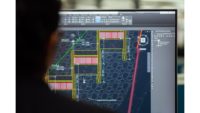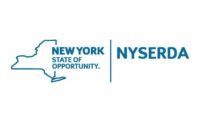WASHINGTON — WalletHub has announced its Top 100 metro areas for STEM Jobs. The study ranked municipalities on three primary categories: professional opportunities, STEM-friendliness, and quality of life.
Topping the list is Seattle, which carried the study’s top overall rank and “professional opportunities” categories. Boston ranked No. 2 overall, earning the top position in the study’s “STEM-friendliness" rank” Dayton, Ohio, which ranked 27 overall, earned the highest “quality of life” rank.
See the entire list of 100 municipalities by clicking here.
STEM workers are in fierce demand, and not just in the global epicenter of high tech known as Silicon Valley. According to the latest U.S. Bureau of Labor Statistics analysis, STEM — science, technology, engineering and math — professions are expected to grow 8.8% between 2018 and 2028, compared to just 5.0% for all other occupations. In addition, the median annual STEM wage is $84,880, compared to $37,020 for all non-STEM occupations.
Given their growing demand, STEM careers today provide some of the most lucrative employment opportunities. They pay higher salaries and boast far fewer threats of unemployment compared with other types of jobs. According to the latest BLS statistics, software developers can expect the most job growth, with 241,500 new jobs between 2018 and 2028. Computer and information systems managers will enjoy the highest median wage, at $142,530.
“Most STEM graduates perform quite well in the labor market,” said Vikram Kapila, professor, Tandon School of Engineering, New York University. “Engineering, computing, and technology graduates especially can begin on professional tracks immediately after their undergraduate degrees. In most other fields, beginning a professional career often requires at least a graduate degree. The rapid advancements in engineering, computing, and communication are impacting myriad domains, such as agriculture, construction, energy, entertainment, finance, health, manufacturing, robotics and AI, supply-chains, and transportation. All of these fields continue to have healthy demands for STEM graduates.”
STEM Metrics
To determine the best markets for STEM professionals, WalletHub compared the 100 largest metro areas across 21 key metrics.
In order to determine the best job markets for STEM professionals, WalletHub compared the 100 most populated U.S. metropolitan statistical areas (MSAs) — metro areas, for short — across three key dimensions, “Professional Opportunities,” “STEM-Friendliness,” and “Quality of Life.”
The company evaluated those dimensions using 21 relevant metrics, which are listed below with their corresponding weights. Each metric was graded on a 100-point scale, with a score of 100 representing the most favorable conditions for STEM professionals. Data for metrics marked with an asterisk (*) were available only at the state level.
Finally, Wallethub determined each metro area’s weighted average across all metrics to calculate its overall score and used the resulting scores to rank-order the sample.
Professional Opportunities – Total Points: 33.33
- Job Openings for STEM Graduates per Capita: Double Weight (~6.35 Points);
- Share of Job Postings in Tech: Full Weight (~3.17 Points), note: This metric measures the share of job postings in tech out of total postings on Indeed.com;
- Share of Workforce in STEM: Double Weight (~6.35 Points);
- STEM Employment Growth (2018 vs. 2015): Double Weight (~6.35 Points);
- Unemployment Rate for Adults with at Least a Bachelor’s Degree: Full Weight (~3.17 Points), note: “Adults” include the population aged 25 years and older;
- Annual Median Wage for STEM Workers: Full Weight (~3.17 Points), note: This metric was adjusted by the cost of living;
- Average Monthly Earnings for New Employees in STEM Industries: Full Weight (~3.17 Points); and
- Median Wage Growth for STEM Workers (2018 vs. 2015): Half Weight (~1.59 Points).
STEM-Friendliness – Total Points: 33.33
- Mathematics Performance*: Full Weight (~5.13 Points), note: This metric considers standardized math test scores of fourth and eighth graders;
- Number of Best Engineering Schools: Full Weight (~5.13 Points), note: This metric measures the number of engineering universities in the top 105 of U.S. News & World Report’s “Best Engineering Schools” ranking;
- Quality of Engineering Universities: Full Weight (~5.13 Points), note: This metric is based on U.S. News & World Report’s “Best Engineering Schools” score;
- Disparity of Women vs. Men in STEM Occupations: Half Weight (~2.56 Points);
- Disparity of Women vs. Men in STEM Field of Degree: Half Weight (~2.56 Points);
- Research & Development (R&D) Spending & Intensity*: Full Weight (~5.13 Points);
- Invention Patents per Capita*: Half Weight (~2.56 Points), note: “Invention Patents” refers to state-granted invention patents including utility, design, plant, and reissue patents;
- Tech Meetups per Capita: Half Weight (~2.56 Points);
- Presence of Tech Summer Programs: Half Weight (~2.56 Points), note: This binary metric considers the presence or absence of Tech Summer Programs in the cities.
Quality of Life – Total Points: 33.33
- Housing Affordability: Full Weight (~8.33 Points), note: This metric was calculated as follows: Annual Median Gross Rent / Annual Median Wage for STEM Workers;
- Recreation-Friendliness: Full Weight (~8.33 Points), note: This metric is based on WalletHub’s “Best & Worst Cities for Recreation” ranking;
- Family-Friendliness: Full Weight (~8.33 Points), note: This metric is based on WalletHub’s “Best & Worst Places to Raise a Family” ranking; and
- Singles-Friendliness: Full Weight (~8.33 Points), note: This metric is based on WalletHub’s “Best & Worst Cities for Singles” ranking.




